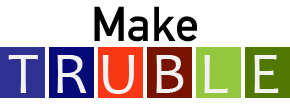Analyzing Nutrient Simulation Experiments with a one-way ANOVA
Author(s): Rebecca North
1246 total view(s), 716 download(s)
BeforeYouBegin.pdf(PDF | 112 KB)
Dummydata.csv(CSV | 109 B )
Final Swirl Lesson Plan_North.docx(DOCX | 16 KB)
NorthNSEANOVA.swc(SWC | 4 KB)
- License terms
Description
In this lesson, we will provide an overview of parametric and non-parametric statistics and when and where they should be applied. We will discuss what tests are appropriate to analyze the data from the students’ nutrient simulation experiments (NSEs). We will have a hands-on tutorial in R and introduce the students to swirl using the lesson “RprogrammingE”. As a group, we will complete the lesson “NorthNSEANOVA” using a dummy dataset. Then the students will individually work through the 1-way ANOVA using their own datasets. By the end of this lab, students should be able to understand how and why they are applying 1-way ANOVAs to analyze their individual nutrient addition experiments. They will be comfortable loading datasets, executing commands in R and interpreting and reporting statistical outputs/results. They should each have an F value and p values associated with their experiments from the 1-way ANOVA and post hoc Tukey tests. They should know if their experimental treatments resulted in significantly different chlorophyll a concentrations.
Notes
This module is an adaptation of Geyer, K. (2020). Conducting Analysis of Variance (ANOVA) in R with swirl. Teaching with R in Undergraduate Biology, (Version 1.0). QUBES Educational Resources.
Important changes were:
Inclusion of introductory BeforeYouStart.PDF document that explains how to set a working directory, load libraries, data, and the course lesson.
Instead of using plant data (iris) that is published, the objective of the one-way ANOVA is to analyze nutrient simulation experiments with an individually loaded Dummy Dataset.
Specific details on interpreting these types of experiments are provided.
The Dummy data passed both assumption tests so a log transformation was unnecessary, but I’ve retained instructions on how to transform data in case the students need to apply it to their own individual datasets from experiments they conducted.
The order of assumptions and transformations has been modified.
Cite this work
Researchers should cite this work as follows:
- North, R. (2020). Analyzing Nutrient Simulation Experiments with a one-way ANOVA. Make Teaching with R in Undergraduate Biology Less Excruciating 2020, QUBES Educational Resources. doi:10.25334/SFP1-1C96
